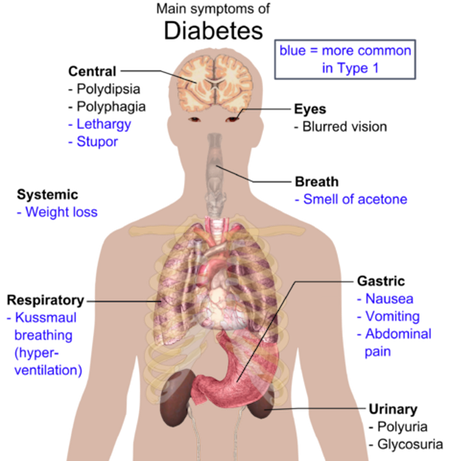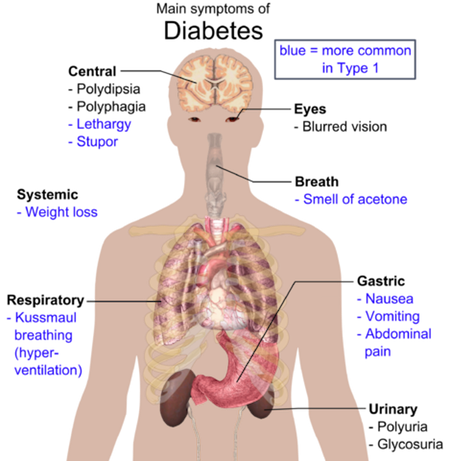I was three when I was diagnosed with type-1 diabetes.
After I began “taking several extra trips to the bathroom and eating less and less,” my parents said they feared the worst. They knew that my recent ailment was more than the common flu, and it was “terrifying” according to my mom. They had no idea of the frustration and powerlessness they would feel over the next 13 years after my doctor told them “he has a little diabetes.” The doctor was making an attempt to diminish the gravity of the situation with his euphemistic “little diabetes.” The reality was that I had just as much diabetes as every juvenile type-1 diabetic, and it was much more than just a “little.” 
According to the Diabetes Research Institute Foundation, diabetes is a metabolic disorder in which the ability of the body to metabolize glucose is impaired by a lack of insulin being provided by islet cells in the pancreas. In type-1 diabetes, this is caused by autoimmune destruction of the cells. This means that my own immune system mistakenly identified the cells as a threat and destroyed them. Synthetic insulin can be administered to patients to nullify the symptoms of type-1 diabetes, but complete control is nearly impossible with contemporary technologies.
According to the Centers for Disease Control survey, as of 2010, 25.8 million people in the United States have some form of diabetes. Although most of those affected by diabetes are over the age of 20 and have type-2 diabetes, about 215,000 people are going through a struggle like mine. Type-1 diabetes is less common than type-2, but is often deadlier and has more long-term afflictions.
Carolyn Banion, a pediatric nurse practitioner that works at the Barbara Davis Center for Diabetes in the Anschutz medical campus in Aurora, CO, says that if untreated, type 1 diabetes can leads to damage of “the vessels in the eyes, the vessels in the kidneys, and the vessels in the extremities from having high blood sugars.” Damage to these key parts of the bodies over time leads to impaired function and can be life threatening. Without insulin to help the body metabolize glucose, this sugar builds up in vessels and is not used by body cells. Diabetics must inject insulin several times a day to curb the effects of this build up.
Banion went on to say that “at least 50-60% [of teens] miss some shots, they don’t test all the time like they should and if they’re on a pump, they miss bolus doses.”
I personally have never had a problem keeping up on my treatments, but Banion tells me that some more recently diagnosed teens are embarrassed to do insulin shots in front of their friends or don’t see the danger in avoiding treatment.
The National Diabetes Information Clearinghouse says that a sensor can be used in diabetic patients to monitor blood glucose levels throughout the day. In coordination with a device that delivers insulin periodically, like the pump that I wear, a type of “artificial pancreas” can be developed to reduce the micromanagement of insulin delivery.
My mother explained that, “The sensor is most useful in the big picture when you can look over a day or a week or a month and see the [blood sugar] trends.” Being able to see blood glucose trends throughout the day allows those like me to adjust insulin levels to help normalize blood sugars. This would improve the lives of many teenagers who tend to be “rebellious when it comes to their treatments” my mother told me. To better control my blood sugar, I’ve recently been wearing a sensor, or Continuous Glucose Monitor (CGM).
Before technologies like the CGM, diabetics had to rely on tests like Hemoglobin-A1c (HBA1c) that do not accurately represent blood-glucose levels on an hourly basis. HBA1c is a measurement of the amount of glucose that has attached to blood cells in the past 3 months. It can be used to diagnose and improve the treatment of diabetes. However, during puberty and into teenage years, more and more complex hormones as well as stress complicates the treatment process even further by creating inconsistency in blood glucose.
Although diabetes is an unfortunate, horrible reality for millions of Americans, there are some potential “benefits” of the disease. Diabetics learn more about nutrition and medicine at an early age. I also have the privilege of being a member of an exclusive, international community.
| Related articles: Vitamin D May Reduce One's Likihood of Developing Type 1 Diabetes; Type 1 vs Type 2 Diabetes |
My father also pointed out that “it teaches some discipline… It gives you maturity beyond your years.”
I certainly feel more prepared for what the future may hold knowing that I’ve already seen the some of the worse life has to throw at me. While we wait for a cure, the best medicine continues to be our positivity in the face of extreme adversity.
Jackson Dean

This work is licensed under a Creative Commons Attribution-NonCommercial-NoDerivs 3.0 Unported License
















